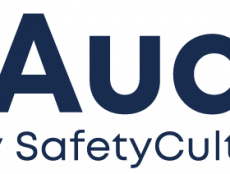
Articles
Higher Education
Student Loan Default Rates Continue to Rise Among For-Profit Graduates
By Henry Kronk
September 30, 2018
On Wednesday, the U.S. Department of Education put out a curious press release. The headline read “National Student Loan Cohort Default Rate Falls.” In other words, graduates who took out federal loans to pay for college are defaulting—as a group—at lower rates than previous years.
The headline obscures one data point: cohort default rates for learners who attended for-profit institutions is still going up. According to DoE data, the three-year default rate in 2013 among for-profits sat at 15%. It rose to 15.5% in 2014 and bumped to 15.6% in 2015, the latest year for which data is available.
Non-profit public and private institutions, which have not received much regulatory action in the past ten years, saw three-year cohort default rates fall to 10.3% and 7.1%, respectively. This may well be more of a reflection on the American economy, which has continued to create jobs, than DoE action.
Long Term Default Rates Are Much Higher
Measuring graduates’ three-year cohort default rate was established by the Obama Administration to ensure that learners were getting the education they paid for. But zooming out to look at longer periods, default rates for for-profit college graduates is much higher, according to numerous reports out this year.
“Of borrowers who started repaying in 2012, just over 10 percent had defaulted three years later,” writes Ben Miller for the New York Times. “That’s not too bad — but it’s not the whole story. Federal data never before released shows that the default rate continued climbing to 16 percent over the next two years, after official tracking ended, meaning more than 841,000 borrowers were in default. Nearly as many were severely delinquent or not repaying their loans (for reasons besides going back to school or being in the military). The share of students facing serious struggles rose to 30 percent over all.”
From information obtained by a Freedom of Information Act request, Miller confirmed what many already know: it’s much worse for graduates of for-profit institutions. The information shows that a full quarter have already defaulted and an additional 19% display loan distress.
Federal law stipulates that institutions must keep their three-year cohort default rates below 30%. Miller argues that the period over which the DoE measures default should be much longer.
Getting a Broader Look
In January, the Brookings Institution published a report looking at even longer time periods. The study looked at cohorts of borrowers from the 1995-96 and 2003-04 school years. It found that over periods as long as 20 years, default rates continue to rise every year.
What’s more, it found that the ratio of borrowers to entrants among institution type played a significant role in telling the story of student debt. As the authors write, “The new data show the importance of examining outcomes for all entrants, not just borrowers, since borrowing rates differ substantially across groups and over time. For example, for-profit borrowers default at twice the rate of public two-year borrowers (52 versus 26 percent after 12 years), but because for-profit students are more likely to borrow, the rate of default among all for-profit entrants is nearly four times that of public two-year entrants (47 percent versus 13 percent).”
The 12-year default rate at for-profits has gotten much worse as well. For the ’95/’96 cohort, it stood at 23%, but by ’03/’04, it rose to 43%. Graduates of color, furthermore, are far more likely to be in trouble: “Debt and default among black college students is at crisis levels, and even a bachelor’s degree is no guarantee of security: black BA graduates default at five times the rate of white BA graduates (21 versus 4 percent), and are more likely to default than white dropouts.”
Viewing graduate cohort default rates over a three-year period gives taxpayers and voters only a narrow view of the landscape.
Featured Image: Mikael Krisenson, Unsplash.









[…] ultimate objective of this program is to provide a safe and simple to navigate way for students to take standardized testing in the current environment. Having been built on Microsoft’s Azure cloud, the program is […]
[…] Sometimes we can feel like we are stuck in a rut with the career choices we have made in the past. It isn’t easy to start thinking about a decision that will determine how you spend the majority of your time until retirement age. Who really knows where their passions lie or skills lie best without a little experience of the world? […]
[…] many have concerns about an AI system monitoring and securing a test, the method has become common practice amid […]
[…] of technological change in a matter of months: faculty have leaned into Zoom, video recording, remote proctoring and a host of other technologies to deliver online learning in all its […]
[…] to whatever extent there is a debate or a dialogue going on about online or remote proctoring in assessment, there are still facts. And those facts, uncomfortable as they may be to confront, are not going […]